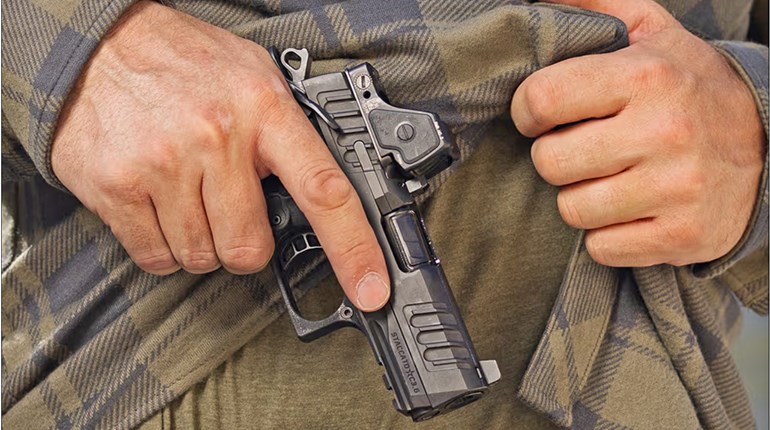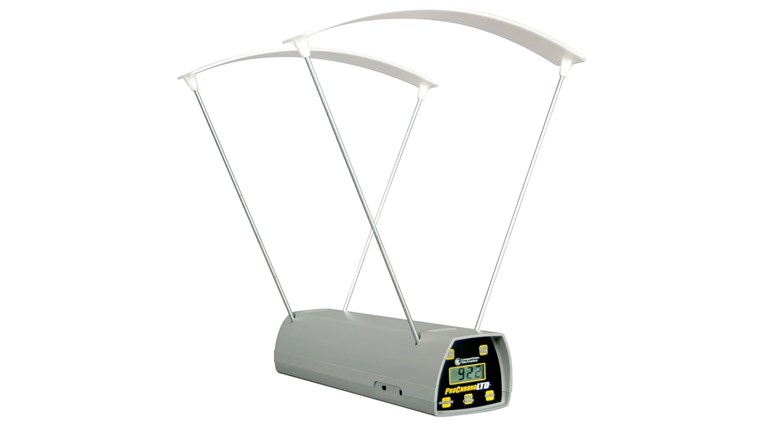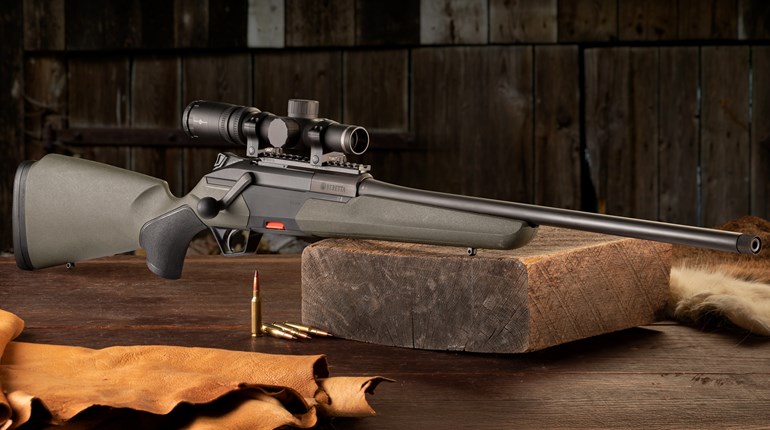
Arguably one of the most important skills in performance shooting is the ability to press the trigger on an aiming point, achieve accurate round placement on that point and have the muzzle return to that same point before firing the next round. Such discipline demonstrates good muzzle control.
Our drill this month helps train you to develop such control by recovering back to the same trigger point, aka “return to sender.”
Here’s the Drill
Set up a paper target at the 7- or 10-yard line. Shooters seeking greater a challenge can do so by increasing distance. Novice shooters may set up closer. Place a 1- or 2-inch dot, sticker or piece of tape to designate a precise point-of-aim, point-of-impact and point of recovery. All three need to be the same spot. We’ll call this spot T1.
Phase One
Starting with your muzzle aimed in at the visual center of T1, press off a single round while maintaining awareness of what your sights are doing before, during and after the shot. Visually track your sights as they lift and mentally process your visual input by determining which direction the sights lifted and where they returned.
Do not fire a second round. Simply track which direction your sights moved and observe where they landed. Did they travel a perfect 6-to-12 o’clock route, or did they travel more to 1- or 2- o’clock or 10- to 11 o’clock? The closer you can keep your sight trajectory to 6- to 12-o’clock, the better. Did they land on your initial trigger point or elsewhere? If so, then determine why.
Run this same phase-one, single-shot drill five times total. Observe and note your sight trajectory and landing position(s). Identify any patterns. Phase one total: 5 rounds.
Phase Two
Starting with your muzzle aimed in at the visual center of T1, press off a single round while maintaining awareness of what your sights are doing. When the muzzle recovers back to your trigger point, press off a second round. Visually track your sights throughout the delivery of both rounds. Your goal is not going for speed. The work effort here is to note which direction your sights lifted and precisely where they landed after recovery for both rounds.
Run this same phase-two, double-shot drill five times total. Note the sights’ trajectory and landing position(s) and look for patterns. Phase two total: 10 rounds for a grand total of 15 rounds.
The purpose of this drill is to discover what it takes to direct your muzzle where you want it by following a predictable trajectory and avoiding any unnecessary input that may cause failure to return to point-of-aim/point-of-impact.
This short-but-sweet, two-part drill directs your body to teach you what it takes to get your muzzle to return to its initial trigger/aiming point.
Knowing what it takes to control muzzle lift and recovery affords you precise round placement on demand—a critical skill for anyone training to shoot exceptionally well.





































